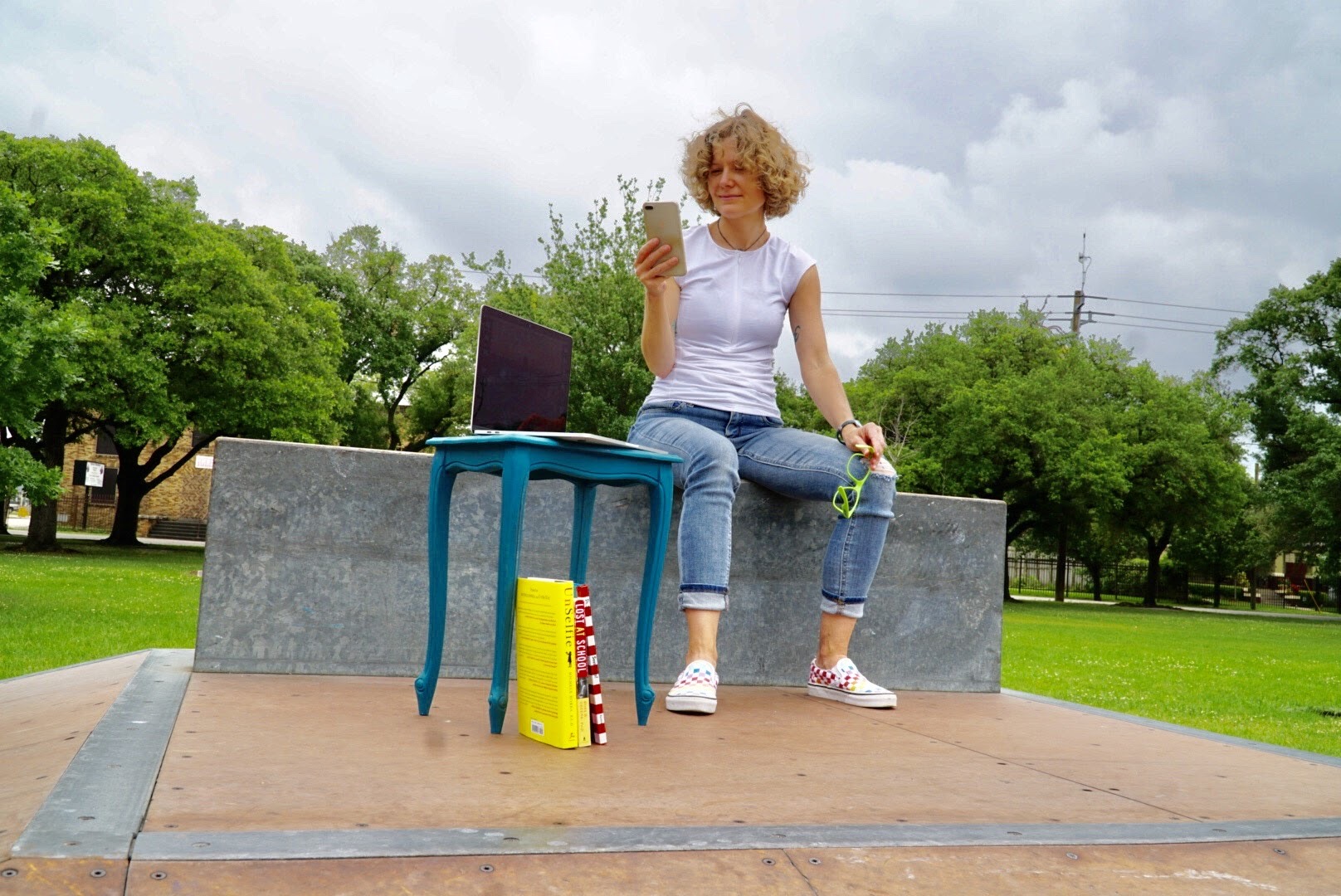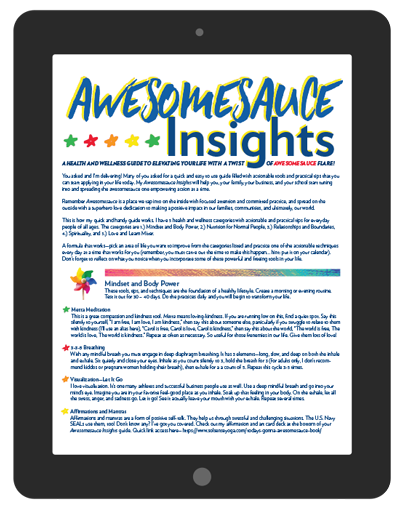I heard these two menacing words throughout my school life – that sounded part drill sergeant and a well-intentioned mom who was beyond stressed from her kids not listening the hundredth time – “Please focus!”
Easy enough.
But, somehow more challenging than the algebraic equations or Homer literary compositions we had to learn.
And, that’s when I was in school when simple desktop computers in households belonged to only those that could afford one and cell phones didn’t exist except for the big box car phones.
When I ask students how to focus I often get this common remark, “I just tell myself to focus.”
Again, easy enough.
However, the fact is that focus isn’t easy at all and just telling ourselves to focus isn’t enough.
Self-talk is great, and we also must understand the mechanics behind learning how to focus. It is a skill that must be scaffolded and developed overtime, just like other core curricula skills.
It’s becoming blaringly obvious that if we don’t teach this skill we are failing our students, the economy, and the world in which we hope to live someday.
A recent survey found that nearly half of the students in the classroom are distracted by technology. If you want to learn more about that study, read it here.
But, do we really need this to confirm our own personal experiences at home and in the classroom?
Digital detoxes are common nomenclature. Anyone with a small, super powerful digital device in their hands knows how alluring the immediate gratification we get by tapping, swiping, and scrolling is to our brain.
If you walked into a classroom recently, you may see that many kids are popping around like popcorn in their chairs barely able to sit still for several seconds.
We have a serious problem in American classrooms today: focus.
A few weeks ago, the LinkedIn Editorial Team came out with its 2020 report sharing 20 big ideas for the new year and decade ahead in 2020.
Here’s what they had to say, “Your ability to focus will be your most important skill.”
Of course, LinkedIn cited other studies indicating how distracted workers are today – at least two-thirds of workers admitted to using up to an hour of screen time a day during prime working hours. That’s 5 hours a week, and a whole lot can be accomplished in 5 hours each week!
You can read the full LinkedIn report here.
As technology pervades into our everyday lives, it’s not all bad or scary, because it has increased access to information, knowledge, and education which creates more opportunity and possibility to students across all social, racial, and economic categories and lines.
But like the core curricula skills we (meaning anyone not a GenXer, Millennial, or iGen) learned in school – math, reading and science – and just like we now see that technology and varied humanities classes are a needed component of the wholistic academic experience, so is focus.
Focus is no longer an option. It’s a necessity.
If you are not making this a priority in your school, you are failing your students.
Here are a few reasons why and what you can do about it now.
Managing Our Relationship with Technology Is a Biological Necessity
Several times a year I train educational leaders and educators how to help their students and staff develop focus and sustained concentration.
One of my slide decks references this quote by David Coleman, President of the College Board, “Technology of interruption has outpaced the technology of concentration.”
What David is saying is that in line with Moore’s law, the ever-expanding and increasing rate of change and speed of technology (occurring every two years), is more than our current concentration apparatus can handle.
We must manage our relationship with technology. In order to do that effectively, we must become self-aware of how it impacts our mental and emotional health.
So, technology breaks to understand the inner workings of the mind are key.
Information Overload
We are overloaded with information, and our students are exposed to more stuff and noise than any other time in history. The fact is we are just not biologically designed to process the amount of information coming our way each day.
Our students have to learn how to measure what information to pay attention to and what information to disregard.
This requires setting boundaries and limits on the kinds of information they (and we for that matter) consume, and a process of reflection to understand the impact of how setting limits, or not, can affect our mind’s ability to process information with more ease, presence, and accuracy.
Emotions Aren’t Just for Therapists
We’ve been living our lives in the world of education as if our emotions are separate from who we are, and who are students are, in the classroom.
“Zip them up and leave them at home”, we are told. This is a distorted way to live in the world.
Or maybe, as an educator you feel, “That’s not my job, take it to the counselor.”
True, there’s a time and place for counselors and therapists, but the reality we live in now is that emotions and mental health is a part of the everyday conversation and it’s only showing increased signs of becoming more common.
Most educators might be familiar with the Adverse Childhood Experiences study, and if you teach in a large urban district with a high population of low socio-economic status students, you may know that those same students have a probability of having a higher ACE score which adversely impacts their academic, social, and emotional learning success inside and outside the classroom.
However, the emotional impact of technology and the rise of more social isolation due to increased screen time, is hitting all class, racial, and social lines.
With anxiety, depression, and suicide rates on the rise, emotional identification and regulation are essential to developing not only stable mental health for our students, but it also helps them develop sustained concentration and focus.
Social Sites Are Great Until They Aren’t
Social media is an incredible and powerful learning tool. It’s also a great place to connect to people and other students and classrooms around the world.
But too much of a good thing, isn’t good anymore.
The overuse of social sites has the potential to negatively impact our overall confidence, resilience, and ability to relate and create meaningful relationships.
When we aren’t refining our social animal chops, we become more isolated as I mentioned above, and that social isolation disrupts our emotional state, which in turn disrupts our mental focus apparatus and the destructive cycle continues.
Instead of building our mental and social animal focus and concentration apparatus, we are breaking it down because we aren’t teaching appropriate boundaries along with the required mental training to know what boundaries are needed in any given moment.
Movement Beyond P.E. Is Essential
My neuroscience teacher taught me years ago that something like 80% of our brain cells are coded for movement. The fact is that our bodies LOVE to move.
P.E. programs (and adequate recess) in schools are a foundational element of the whole child experience in education. We need them in all schools, now more than ever.
Movement is key to focus, but P.E. is not enough. We must combine the mind training with movement to re-build our concentration apparatus.
And, movement breaks every hour on the hour in the classroom are important to our student’s whole success. Our brain must have processing time, and the way to do that is through mindful movement and rest.
What to do about this distraction crisis?
We first must acknowledge that we have a huge problem in education, beyond the funding shortages and teacher burnout rates.
In fact, if we address the issue of lack of skilled focus and concentration in schools, we will also address funding shortages and teacher burnout rates because these issues are all tied together.
Social and emotional learning programs and curriculum are important in our schools today, because without teaching the whole child we are only growing half leaders.
If you listen to the market experts today, they are talking about kindness and revenue, emotional intelligence and critical thinking, constructive communication and problem-solving.
How do we help our students cultivate these SEL softs skills needed to not only survive, but thrive in school, college, and the market today?
We do that by implementing mind training programs as part of the core curriculum.
These programs consist of mindfulness-based practices that help students and educators cultivate the core SEL skills needed to adapt to the rapidly changing world we live in today, and most importantly, to rise to their potential.
They also make a positive and lasting impact in our schools promoting the kind of culture that outlives any jeans day.
I’ll talk about how these programs look inside schools in my next piece, but for now, you can check out my fully comprehensive digital program, Mindfulness Education University for Eduators (MEU) by clicking here.
Let’s stop failing our kids and start making mind training a priority in our schools today.
The time is now.
Read what one educator, Caroline Robinson, said of her unforgettable experience in the MEU program:

“Before attending the course, I felt quite overwhelmed when thinking about approaching mindfulness. I’d heard so many strategies and techniques and tools that the topic felt vast and I didn’t know where to start. Athea carefully crafted MEU to take any educator — with any or no experience of mindfulness — through understanding mindfulness for themselves and how to extend that to a classroom of students.
The goal of MEU is clearly to graduate happier, more balanced, more regulated individuals. Balance is one of the greatest challenges I’ve struggled with as a beginning teacher. MEU laid out steps to creating boundaries, consistently implementing practices to increase emotional and physical awareness, and of course, to reflecting on the process. For my students, I’ve witnessed more anxiety and disconnection from the self, emotions and others than I ever thought possible among 7-year olds. I went into Elementary education knowing that I could have a great impact on the routines and well-being of these young minds and bodies.
What I’ve witnessed is that small practices — like talking about and naming emotion when it appears — helps students understand and take responsibility for what’s happening inside and around them. MEU also offers a plethora of resources for teachers to use in the classroom that are easily incorporated into transition moments of the day. From songs to brain breaks, MEU’s tools facilitate a more present, honest and joyful day in the classroom.”

Keep breathing deep and shining bright, Friend! ~


